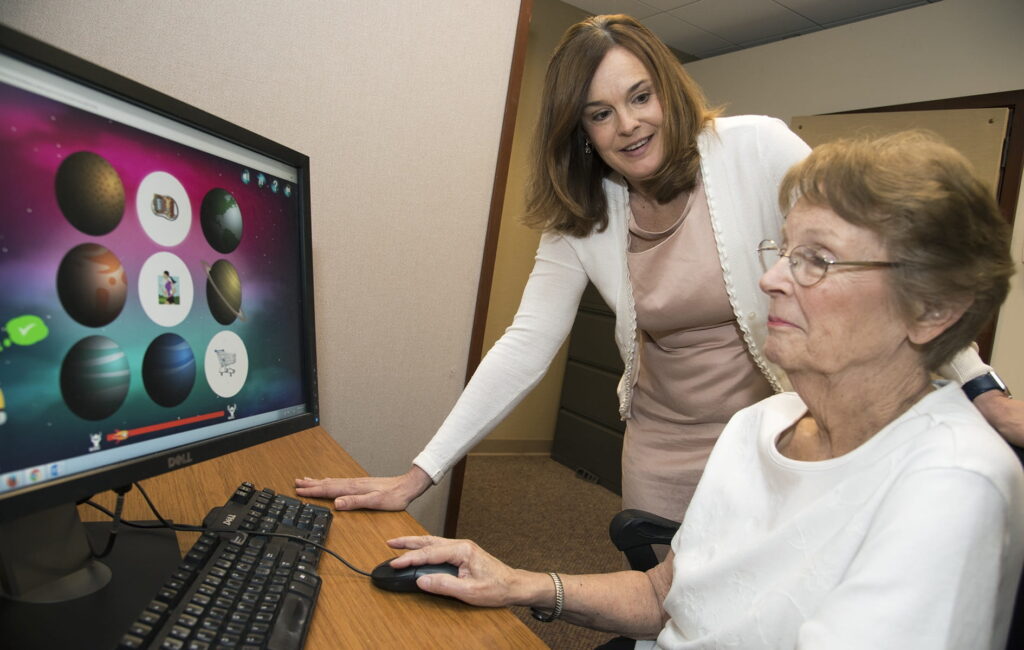The Tye-Murray laboratory studies hearing loss and speech recognition. Half of the lab’s projects center upon understanding the fundamental processes that allow for successful lipreading because being able to read lips greatly enhances a patient’s ability to engage successfully in conversation.
The second half centers upon developing rehabilitation strategies that develop listening abilities in both children and adults.
“We believe that the cross-pollination that occurs from conducting basic and applied research and from studying older and younger persons promotes creativity and scientific breakthroughs,” said Dr. Nancy Tye-Murray, Professor in the Department of Otolaryngology.
The Murray lab studies hearing loss and speech recognition.
Recently, the lab has had two exciting developments:
1. This summer, Dr. Tye-Murray’s lab received a five-year, $3 million National Institutes of Health (NIH) grant to study lipreading abilities in persons who are young and older and who do and do not have hearing loss, using both behavioral measures and fMRI (a technique for measuring and mapping brain activity that is noninvasive and safe).
2. Based on over ten years of research funded by the NIH, Dr. Tye-Murray and her team launched an online auditory brain training program called clEAR or Customized Learning Exercises for Aural Rehabilitation. For use by patients across the country and around the world, clEAR provides auditory brain training or “listening therapy” for persons with hearing loss through engaging and customized computerized games that are stored on the web.
The games help patients with hearing loss develop those cognitive auditory skills that are not only necessary for understanding speech but that are also critical for recognizing speech more successfully, especially in the presence of background noise as you might find in a loud restaurant, according to Tye-Murray.
